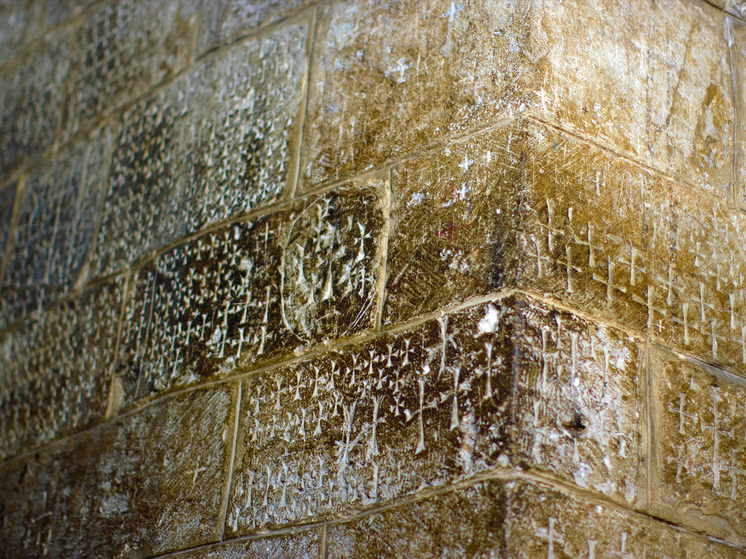Unique altar thought to be destroyed found
Archaeologists have discovered a long-lost altar in the place where Jesus was said to have been buried and resurrected. The discovery was made when construction workers turned over a giant stone slab covered in graffiti that had been leaning against the wall of the Church of the Holy Sepulchre in Jerusalem.

The stone, eight feet long and five feet wide, was decorated with a banded pattern used by the Romans in the Middle Ages and clear inscriptions that lead researchers to believe it was an altar consecrated in 1149, the Daily Mail reports.
The altar was thought to have been destroyed in a fire in 1808. «For historians, this find is sensational in many ways,» said the team from the Austrian Academy of Sciences (OeAW), which made the discovery.
The scientists said: «Firstly, the fact that the slab could have remained hidden for so long in such a heavily researched building as the Church of the Holy Sepulchre, especially since it was in full view of thousands of pilgrims and tourists every day.»
The site of the Church of the Holy Sepulchre is believed to be the site of the crucifixion and tomb of Jesus, and is visited by around four million people every year, the Daily Mail notes.
The church, which has a diameter of more than 5,400 feet, was built on top of a Roman temple dedicated to the goddess Venus in 335 A.D. Commissioned by the Roman Emperor Constantine I, the construction uncovered a tomb believed to be that of Jesus, who died nearly 300 years earlier.
The Church of the Holy Sepulcher has been attacked for centuries, destroyed by the Persian army in 614, almost demolished in 1009, and then burned down in the 1800s when the altar was thought to have been lost.
Tourists have already The front of the slab was long ago covered with graffiti, and perhaps that is why it remained unnoticed for centuries, notes the Daily Mail. However, the unusual decorations on the front side of the wall led researchers to think about the so-called cosmatesque.
«This special technology for making marble ornaments was used exclusively by guild masters in Papal Rome, who passed on the skill from generation to generation,» the team shared. A characteristic feature of this technique was the ability of the craftsmen to decorate large surfaces with small amounts of precious marble.
In medieval Rome, marble was primarily quarried from ancient buildings, forcing craftsmen to optimize the use of whatever marble they could find. Their solution was to connect small pieces of marble with extreme precision, attaching them in such a way as to create complex geometric patterns and dazzling designs.
The Pope is believed to value works of art in this style so much that rarely are any of them found outside Rome, and only one of them, kept in Westminster Abbey, has been found outside Italy.
«The altar, which has now been rediscovered in Jerusalem, must also have been , was created with the blessing of the Pope,” say the researchers.
«By sending one of his craftsmen to the Kingdom of Jerusalem to make a new high altar in the holiest church in Christianity, the pontiff has upheld Christianity's claim to the city.»
The Church of the Holy Sepulchre has undergone constant renovations, creating historical treasures.
In 2016, a team of restorers from the National Technical University of Athens discovered a limestone burial slab inside the tomb of Jesus that had been covered in layers of marble since at least 1555.
Christian tradition holds that the body of Christ was laid on a slab carved into a limestone cave after his crucifixion by the Romans, the Daily Mail reports.
According to Scripture, he rose from the dead three days later, and the women who came to anoint his body said no remains were found.
“We may not be absolutely certain that the Church of the Holy Sepulchre is the burial place of Jesus, but we certainly don’t have another site that can claim such compelling evidence, and we really have no reason to deny the authenticity of this site,” says Dan Bahat, former district archaeologist for Jerusalem and Galilee.
In 2018, dozens of crosses were discovered on the walls of the church, thought to have been carved as graffiti by the Crusaders. After further analysis in 2021, archaeologists discovered that the carvings were made by 15th century masons who were paid by pilgrims who wanted additional assurance of salvation.


